The Thirteenth Dalai Lama, Tubten Gyatso

H.H. the 13th Dalai Lama, Tubten Gyatso. Image credit: Treasury of Lives. Click on image to enlarge.
b.1876 – d.1933
Incarnations: Dalai Lama ཏ་ལའི་བླ་མ།
Tradition: Geluk དགེ་ལུགས།
Geography: Mongolia
Historical Period: 19th Century ༡༩ དུས་རབས། / 20th Century ༢༠ དུས་རབས།
Institution: Ganden དགའ་ལྡན་།; Sera Monastery སེ་ར།; Drepung Monastery འབྲས་སྤུངས་།; Tashilhunpo བཀྲ་ཤིས་ལྷུན་པོ།; Kumbum Jampa Ling སྐུ་འབུམ་བྱམས་པ་གླིང།; Tsel Gungtang ཚལ་གུང་ཐང།; Ralung Monastery རྭ་ལུང་དགོན་པ།; Gyuto Dratsang རྒྱུད་སྟོད་གྲྭ་ཚང།; Reting Monastery རྭ་སྒྲེང།; Drepung Gomang Dratsang སྒོ་མང་གྲྭ་ཚང།; Langdun Manor House གླང་མདུན་གཟིམས་ཤག།; Lhasa Tsuklakhang ལྷ་ས་གཙུག་ལག་ཁང།; Shol Printery ཞོལ་སྤར་ཁང་ཤར་དགའ་ལྡན་ཕུན་ཚོགས་གླིང།; Namgyel རྣམ་རྒྱལ་།; Potala པོ་ཏ་ལ།; Norbulingka ནོར་བུ་གླིང་ཁ།; Mentsikhang སྨན་རྩིས་ཁང།; Ikh Khuree ད་ཁུ་རེ་དགོན།; Tsari ཙཱ་རི།; Bhutan House མི་འགྱུར་ངོན་དཔར་དག་བའི་ཕོ་བྲང།; Wutai Shan རི་བོ་རྩེ་ལྔ།; Bodhgaya རྡོ་རྗེ་གདན།; Lhamo Latso ལྷ་མོའི་བླ་མཚོ།
When the Twelfth Dalai Lama, Trinle Gyatso (ta la’i bla ma 13 ‘phrin la rgya mtsho, 1856-1875) died at the young age of twenty in 1875, his face is said to have turned toward the south-east, which was taken as a sign that the new incarnation would be born in that direction. This was confirmed by the Nechung Oracle (nas chung), and by the Eighth Panchen Lama, Tenpai Wangchuk (paN chen 08 bstan pa’i dbang phyug, 1855-1882). According to Tibetan accounts, the Nechung Oracle was consulted three times. At the third consultation, the oracle gave precise details and foretold the names of the parents. The father’s name would be Kunga Rinchen (kun dga’ rin chen) and the mother’s name Lobzang Dolma (blo bzang sgrol ma).
The then Regent of Tibet, the Tenth Tatsak, Ngawang Pelden Chokyi Gyeltsen (rta tshag 10 ngag dbang dpal ldan chos kyi rgyal mtshan, 1850-1886), who was also known as the Second Kundeling (kun bde gling 02), and the Kashak (bka’ shag), or Council of Ministers, appointed a former abbot of Gyuto Monastery named Khenzur Lobzang Dargye (mkhan zur blo bzang dar rgyas, d.u.) to head a search party to locate the new Dalai Lama. As was customary practice, Khenzur Lobzang Dargye went to the sacred lake of Lhamo Lhatso (lha mo lha mtsho) to seek a vision of the location and any other indications that might be revealed of the whereabouts of the Dalai Lama. When the Khenzur reached the lake it was a bitterly cold winter’s day, but the surface of the lake was clear as “a mirror cleansed a hundred times”. On the surface of the lake, the Khenzur is said to have seen a vision of a hamlet and a couple bringing out a child from a house, saying this is the Dalai Lama. In the Khenzur’s vision, the boy blessed the Khenzur by touching his forehead. Later, when Khenzur Lobzang Dargye arrived at the village he could recognize the place from the vision he had seen on the surface of the lake.
The boy who would soon be identified as the Thirteenth Dalai Lama was born on May 27, 1876. Many auspicious signs accompanied his birth. One year earlier, an earthquake had struck the Dakpo (dags po) area, and all the houses in the village where the Dalai Lama was born, Langdun (glang mdun), were destroyed or badly damaged. Only the house of the future Dalai Lama remained intact. At first this was seen as inauspicious, but a lama told the family that this was an auspicious sign. The boy’s mother is said to have received many dreams prior to his birth indicating that he was the rebirth of the Dalai Lama, and other mystical signs are said to have appeared, such as a tree flowering out of season and rainbow lights in the sky. The newborn is said to have had a fair complexion and a parasol-like head, with shining black hair with a single strand of white hair in the center.
When the child was two years old, the search party lead by Khenzur Lobzang Dargye arrived in Langdun. Satisfied with their discovery, they reported back to Lhasa and received confirmation from the Nechung Oracle.
Since there were no other candidates, the Regent submitted the name of the boy and details of discovery to the Machu Guangxu Emperor (光緒, r.1875-1908), who sent his official endorsement. The young boy and his parents were taken to Lhasa accompanied by an escort of one hundred Tibetan soldiers and monks. The party rested at Tsel Gungtang (tshal gung thang), a monastery fifteen miles from Lhasa, for three months, while the city prepared to welcome the new Dalai Lama. While at Tsel Gungtang, the Regent, members of the Kashak, the abbots of the three great monasteries, the Amban Songgui, who was the Qing representative in Tibet from 1874 to 1879, and the Gorkha representative in Tibet known as the Vikal, all came to pay their respects.
The impending arrival of the new Dalai Lama in early 1878 caused great excitement in Lhasa. Every building in the city was painted with fresh coats of whitewash and rooftops were strung with new prayer flags. The boy was brought to the Potala Palace where the Panchen Lama performed the haircutting ceremony (gtsug phud) in the Nyeryo (nyed yod) Chamber and bestowed the name Jetsun Ngawang Lobzang Tubten Gyatso Jikdrel Wangchuk Chokle Namgyel Pelzangpo (blo bzang thub bstan rgya mtsho ‘jigs bral dbang phyug phyogs las rnams rgyal dpal bzang po). The Thirteenth Dalai Lama generally came to be known by his abbreviated name of Tubten Gyatso, (thub stan rgya mtsho). The young Dalai Lama’s family was ennobled and took the name of Yabzhi Langdun (yab bzhis glang mdun). As was customary, the Qing Emperor bestowed the title of Gong (公) on the Kunga Rinchen (glang mdun kun dga’ rin chen, d. 1887), the father of the Dalai Lama.
The Dalai Lama was formally enthroned on August first, 1879. His early childhood was spent in the Potala Palace during the winter seasons, and in the Norbulingka during the summer, surrounded by monk officials who had served the Twelfth Dalai Lama. When the Dalai Lama reached the age of six, his religious training began with the taking of getsul (dge tsul, novice) vows. The Regent, the Tenth Tatsak, was appointed as the Dalai Lama’s senior tutor, even as he also continued to oversee the operation of the government. After the Regent’s death in 1886, he was succeeded as Regent by the Ninth Demo, Ngawang Lobzang Trinle Rabgye (de mo 09 ngag dbang blo bzang ‘phrin las rab rgyas, 1855-1900).
The Third Purchok, Jampa Gyatso (phur lcog 03 byams pa rgya mtsho, 1824-1901) of Sera Monastery, who had served as a tutor to the Twelfth Dalai Lama, was appointed as the junior tutor to the Thirteenth. The young Dalai Lama became close to his junior tutor, whom he held in great affection. After Purchok’s death, the Thirteenth Dalai Lama wrote a moving biography of his teacher, and later wrote that “the kindness of my teacher can not be repaid even at the cost of the heaps of jewels that fill the three worlds.”
The Dalai Lama’s early years were governed by formality and a strict regime of learning. He was attended by elderly monks who taught him writing and reading and, as he became proficient, Purchok began his formal training in Buddhist scriptures. During his childhood the Dalai Lama also suffered from various illnesses, the most serious being in 1882 when he fell ill during a smallpox (‘brum) epidemic in Lhasa.
Problems with the British
One of the pressing problems facing Tibet during the early years of the Thirteenth Dalai Lama’s reign was the menace of the British in India. The Tibetans became increasingly aware of the British interest in their country and the strengthening of British rule in the foothills of the Himalayas during this period. In 1885 the British sought permission from the Chinese Qing government to send a mission to Lhasa. This British mission, lead by Colman Macaulay, arrived with military escort on the frontier between Sikkim and Tibet. The Tibetans, however, viewing the military escort as an indication of British readiness to invade Tibet, refused to allow the mission to enter the country, and the British stood down.
With a new sense of urgency, the Tibetan Government then gave orders to mobilize a new army to protect its border. Two military officials, Dapon Lhading (mda’ dpon lha sding, d.u.) and Tsedron Sonam Gyeltsen (rtse mgron bsod nams rgyal mtshan, d.u.) were sent to recruit soldiers from Kongpo in southern Tibet. One thousand soldiers were also brought from Drakyab (brag g.yab) in Kham. In 1880, nine hundred Tibetan soldiers were sent to the border of Sikkim to guard against any possible British invasion, after receiving the blessing of the Dalai Lama.
This Tibetan army, lead by Depon Ngapo (mda dpon nga phod, d.u.) and Surkhang (zur khang, d.u.), moved into Lungtar (rlung thar), a high pass between Sikkim and Tibet which Tibetans regarded as part of their country. The British demanded that the Tibetans withdraw, claiming the area was part of Sikkim. When the Tibetans refused, the British attacked the Tibetan camp in March 1888 and drove the Tibetan army out of the area. This was the first armed clash between the Tibetans and technologically superior British army. In 1890 in Darjeeling, the British government and the Chinese Qing government signed a treaty known as the “Anglo-Chinese Convention Relating to Sikkim and Tibet.” The treaty granted the British right to trade and send missions to Tibet, and defined the frontier between Tibet and Sikkim. However, the Tibetans disregarded all agreements signed between China and Britain regarding Tibet, taking the position that it was for Lhasa alone to negotiate with foreign powers on Tibet’s behalf.
When the Dalai Lama was thirteen years old, he recorded a dream in which “a black man visited and told him that he would face many difficulties and that he would be forced to travel to Mongolia, China and India”. The figure in the dream also prophesied that he would live longer then any other Dalai Lama. The prophecy appeared to be stikingly born out when the Dalai Lama was later exiled to the countries foretold in the dream.
Assumption of Power
Until the age of twenty, the Thirteenth Dalai Lama devoted himself to religious studies and refused to assume political power despite repeated request. Historically the Dalai Lamas assumed political power at the age of eighteen. The Thirteenth Dalai Lama however told the Kashak that he wanted to wait until he had completed his religious studies.
On the first day of the eighth Tibetan month of the wood-sheep year, or 1895, the Dalai Lama was given full ordination, or gelong (dge slong) vows. The ceremony took place at the central Lhasa cathedral, the Jokhang, with monks from the three main Geluk monasteries in attendance. The Third Purchok, Jampa Gyatso (pur bu lcog 03 byams pa rgya mtsho, 1825-1901) acted as preceptor. The Ninth Panchen Lama, Lobzang Tubten Chokyi Nyima (paN chen 09 blo bzang thub bstan chos kyi nyi ma, 1883-1937), was at the time too young to participate as would otherwise have been expected.

A picture of H.H. the 13th Dalai Lama, Tubten Gyatso in a less formal setting. Click on image to enlarge.
Despite the Dalai Lama’s continued disinclination to take on the political duties of his office, that year the National Assembly of the Tibetan Government (tshongs ‘du rgyas ‘dzom) was convened, attended by all the nobility and abbots of three great monasteries. The Assembly unanimously called on the Dalai Lama to assume power. The Dalai Lama responded to the assembly’s request by saying that the threat from Britain still had not yet passed and, as the country still faced danger, that more experienced leaders should administrate the country. However, the Dalai Lama told the assembly and the Kashak that they should consult the Nechung Oracle first, and that he would follow the guidance of the oracle. The oracle subsequently told the government officials that the time had indeed come for the Dalai Lama to lead. Thus, on the eighth day of the eighth month of the year, a ceremony was held in the Potala Palace marking the assumption of temporal power of Tibet by the Dalai Lama.
The first two years of the Thirteenth Dalai Lama’s reign passed peacefully. The Dalai Lama mainly visited monasteries and conferred recognition on other lamas. In 1896, however, the Chinese Governor of Sichuan, Lu Chuanlin 鹿傳霖, launched a military attack in Kham in an attempt to gain control of an area called Nyarong (nyag rong), which had been governed by Lhasa since the Lhasa government’s defeat of the regional warlord Gonpo Namgyel (mgon po rnam rgyal, d. 1865) and the conclusion of the Nyarong War in 1865. General Zhou Wanshun 周萬順 led an army to attack a detachment of Tibetan forces in Nyarong and established Chinese control there. The Thirteenth Dalai Lama dispatched a secret mission to Beijing via Calcutta and then by sea, led by Sherab Chonpel (shes rab chos ‘phel, d.u.). This secret mission was a shrewd decision by the young Dalai Lama and circumvented Chinese officials in Lhasa. The Guangxu Emperor (光緒, r. 1875-1908) agreed to the Dalai Lama’s demand for the withdrawal of Chinese soldiers from Nyarong, and the territory was returned to the direct rule of Lhasa.
When the Dalai Lama reached the age of twenty-four, he began to have recurring and disturbing dreams which he noted down on paper. The Dalai Lama consulted Terton Sogyel, Lerab Lingpa (gter ston bsod rgyal las rab gling pa, 1856-1926), a Nyingma treasure revealer, about his recurring dreams. Terton Sogyel saw these dreams as an ominous sign that the Dalai Lama’s life was in danger. This view was further confirmed by the Nechung Oracle’s pronouncements. The Dalai Lama was advised to perform various rituals and good deeds to avert the danger to his life. In 1899, the Third Purchok advised that he should take the exam for the degree of Geshe Lharampa (dge bshes lha rams pa). This is the highest academic degree awarded within the Gelukpa monastic educational system. On the seventh day of the first Tibetan month in the earth-pig year, 1899, in front of a gathering of all the abbots and the monks of the great monasteries of Tibet, the Dalai Lama was examined by his teachers and debated with other Geshes. He became the first Dalai Lama to earn the Lharampa degree.
The Case of Enchanted Boots
In 1900, when the Thirteenth Dalai Lama reached the age of twenty-five — a perilous year according to Tibetan astrology, which holds that every thirteenth year is “obstructed” (skyeg) — the Nechung Oracle repeated his prophecy that the Dalai Lama’s life was in danger. That year the Dalai Lama fell ill frequently, had a low appetite, and grew physically weak. According to one account of the incident, the Dalai Lama noticed that his health deteriorated whenever he wore boots presented to him by Terton Sogyel. When his attendants examined the boots carefully they found a harmful mantra hidden in the sole. The government questioned Terton Sogyel, who declared his innocence and told them that when he wore the boot he also began to bleed from the nose. He told the officials the boots were a gift from another lama from Nyarong named Nyaktrul (nyag sprul) who was renowned for his magical powers. In another account, the boot had been giving to Terton Sogyel by the Ninth Demo, Ngawang Lobzang Trinle Rabgye (ngag dbang blo bzang ‘phrin las rab rgyas, 1855-1899), and were never worn by the Dalai Lama. In this version it was the Nechung Oracle was the one who called attention to the boots.
In either case, when Nyaktrul was interrogated he confessed that he had been recruited by the former regent, the Ninth Demo, and his brother and manager, Norbu Tsering (nor bu tshe ring, d.u.). Using a form of Yamantaka called Shinje Tsedak (gshin rje tshe bdag), he had prepared an image of a man with outstretched arms and legs with mantra surrounding it, and with the name Tubten Gyatso and the word chiwa (byi ba), the birth year of the Dalai Lama, inside the figure. This he put inside the boots, and had also buried magical mantras in the four corners of the Potala Palace and in Samye Monastery (bsam yas). The intention was to murder the Dalai Lama.
The government arrested the Ninth Demo and members of his family, and under questioning Demo admitted his role in the plot. The Demo’s estates were confiscated and he was imprisoned in Lhasa. According to Goldstein, the Demo’s motivation for the affair was that after stepping down from office the Demo’s enemies began threatening him and his family; he attempted to murder the Dalai Lama in order to resume power. The Demo, his brother, and Nyaktrul all died in custody. Although some argued that the Demo was framed by his political enemies, the Dalai Lama later told Charles Bell that he believed the Demo had participated in the plot. The Dalai Lama forbade the identification of the Demo’s reincarnation, but several years later his followers did so anyway — in the person of the Dalai Lama’s own nephew, Trinle Rabgye (‘phrin las rab rgyas, d.u.), whom the Dalai Lama allowed to be confirmed as the Tenth Demo.
After the incident, the Dalai Lama went on pilgrimage to holy places in Tibet, most notably to Dakpa Shelri (dag pa shel ri) in Tsari (rtsa ri), southern Tibet. On the way, he visited Langdun, the village where he was born. In 1902 the Dalai Lama ordained the Ninth Panchen Lama in the Jokhang.
The British Invasion and the Flight to Mongolia
By 1900, the British government had started receiving reports from missionaries based in Tibet and on the Sikkim border that there were hundreds of Russian military advisors in Lhasa and that the Dalai Lama and the Tsar had formed a secret alliance. These reports alarmed Lord Curzon, the Viceroy of India. The British suspicion was further fuelled by information they learned through Russian press, which reported the visit of the Buriyat Lama Agvan Dorjiev (1854-1938) to St Petersburg in 1901. Dorjiev had first come to Lhasa in 1880 to study at Drepung, where it was customary for monks of Mongolian origin to enroll at Gomang College. There he excelled in his studies and was appointed as a debating partner, or tsenzhab (mtshan zhabs) to the Dalai Lama.
As a debating partner, Dorjiev had ample time to meet with the Dalai Lama and they soon established a close friendship. It was through Dorjiev that the Dalai Lama learned of Russia and its increasing influence in Central Asia. For the Dalai Lama and the Tibetan government, this seemed an opportune time to establish closer relations with Russia. The Tibetans realized from earlier clashes with the British at the Sikkim frontier that China was nether inclined nor able to aid Tibet; in order to deter British interest in Tibet, Lhasa was eager to establish contact with other powers. Dorjiev and others close to the Thirteenth Dalai Lama were particularly concerned about British interest in Tibet because they feared that the British were hostile to Buddhism and that a British presence in Tibet would involve Christian missionizing.
In the summer of 1901, Dorjiev arrived in St Petersburg with a letter from the Thirteenth Dalai Lama and one from the Kashak. The Dalai Lama’s letter was formal and expressed his appreciation of the Tsar’s treatment of his Buddhist subjects (mainly Mongolians living within the greater Russian Empire). The letter from the Kashak was explicit in soliciting Russian support against the British. When the British learned of the purpose of Dorjiev visit, they viewed it as a real threat to the security of British India. At this time, during what is often called the “Great Game” period of Asian imperial and colonial rivalries, the British were particularly concerned to counter what they viewed as growing Russian influence and territorial aspirations.
Despite Russian statements to the British that they would not in fact intervene in Tibet, the British remained suspicious. At first, the British demanded that the Chinese Qing government ‘open up’ Tibet to the British. However, the British soon realized that China lacked any real authority in Tibet, and Lord Curzon decided to take a more direct approach by sending a mission to Lhasa with the goal of setting up a permanent British mission in Tibet.
 Lieutenant Colonel Sir Francis Edward Younghusband. Image credit: Wikipedia. Click on image to enlarge.
Lieutenant Colonel Sir Francis Edward Younghusband. Image credit: Wikipedia. Click on image to enlarge.In January 1904, under the leadership of Colonial Francis Younghusband, the British mobilized over eight thousand soldiers and launched an invasion of Tibet from the Sikkim frontier. The ill-equipped Tibetan army was no match for the well-trained British soldiers, and the Tibetans lost over a thousand men in a series of one- sided confrontations. The British marched toward Lhasa.
With Lhasa in a panic, the Tsokdu (tshogs ‘du), or Tibetan National Assembly, convened to discuss the matter. The majority of the assembly members full-heartedly argued that Tibet should fight the British until the last man. At the time, the most senior Minister, Shedra Peljor Dorje (bshad sgra dpal ‘byor rdo rje, d. 1919/1920) argued for the need to conclude a settlement with the British. Shedra was one of the few Tibetan officials who had travelled outside Tibet and knew the real strength of the British army. The hot-headed members of the Tsokdu attacked Shedra, and accused him of being pro-British. The assembly impeached Shedra and four other ministers and imprisoned them. At the time the Dalai Lama was in a three year solitary meditation retreat, which excluded him from intervening in the day-to-day affairs of the state. When he came out, and learned of the arrests, he immediately ordered their release.
At the end of July of 1904, the news reached Norbulingka that the British had reached Chakzam (lcags zam), a day’s ride from Lhasa. The Dalai Lama appointed the Eighty-sixth Ganden Tripa, Lobzang Gyeltsen (dga’ ldan khri pa 86 blo bzang rgyal mtshan, b. 1840) as the Regent, and, at midnight, accompanied by a few of his trusted servants, fled Lhasa.
When the party reached Reting (rwa sgreng) Monastery the Dalai Lama changed into a dress worn by wealthy Mongolian merchants and proceeded towards Ngakchu (ngag chu) in northern Tibet. The journey was arduous and the Dalai Lama and his party faced many difficulties. On the Jangtang (byang thang), the vast northern plain, the party encountered such howling wind that they were unable to pitch tents, forcing the Dalai Lama to sleep in the open. After three months of travel the Dalai Lama and his party arrived in Mongolia and were met at the border by the brother of the Eighth Jetsundampa Khutughtu (1869-1924), the highest ranking Mongolian lama. They were escorted to Urga, the capital of Mongolia.
Mongolia and Tibet shared a close religious and cultural affinity. In addition, serious practical political considerations influenced the Dalai Lama’s decision to go to Mongolia. The Dalai Lama knew that going to China would mean symbolically placing Tibet under Chinese control. The second important consideration was that, per the advice of Dorjiev, who accompanied the Dalai Lama’s party, once in Urga the Tibetans could seek the help of the Russian Tsar. Indeed, soon after their arrival in Urga, the Dalai Lama dispatched Dorjiev to St Petersburg. In a meeting with Shishmaryov, the Russian Consul in Urga, the Dalai Lama asked him directly if Russia would be willing to protect Tibet from China and Britain. As it turned out, however, Russia was facing more pressing problems at home and abroad, including war with Japan, and the Tsar was in no position to offer help to the Tibetans. However, Tsar instructed the ambassador in Beijing to travel to Urga and meet with the Dalai Lama.
The Dalai Lama’s stay in Urga had caused a serious rift with Jetsundampa, the ruler of Mongolia. It would seem that the popularity of the Dalai Lama eclipsed that of the Jetsundampa, who had refused to meet the Dalai Lama on his arrival in Urga. The Jetsundampa had asserted that it was more appropriate for the Dalai Lama to come to him. The Jetsundampa went as far as ordering a throne that had been created for the Dalai Lama to be dismantled. A Mongolian witness recorded that once the Jetsundampa entered a temple where the Dalai Lama had earlier given a teaching. A chair had been placed in front of Jetsundampa’s throne. The lama enquired as to why the chair had been placed in front of his throne and, when told it was for the Dalai Lama, he kicked it. Increasing tension between the two lamas made staying in Urga untenable.
Finally, in 1907, the British and the Russians signed an agreement that neither would act in Tibet. This essentially removed Tibet from the so-called Great Game. As a result of the above mentioned tensions with the Jetsundampa, the Thirteenth Dalai Lama left Urga some time in 1907.
Sojourn in Beijing
After leaving Urga the Dalai Lama travelled in Amdo giving teachings. He stayed primarily at Kumbum (sku ‘bum) Monastery, which marks the spot of Tsongkhapa‘s birth. There he received a delegation from Lhasa which brought news of events in Lhasa and urged him to return. The Dalai Lama decided instead to go to Beijing, leaving in the summer of 1908.
On route to Beijing the Dalai Lama stopped at Wutai Shan (ri bo rtse lnga, 清凉山), in Shanxi, a mountain sacred to the bodhisattva Manjusri which had long been a center of Tibetan and Chinese interaction. There he encountered William Rockhill, who was then the American Ambassador to China. This was the first formal contact between Tibet and the United States. The Dalai Lama presented Rockhill with a painting of Tsongkhapa and a letter to President Roosevelt. Rockhill wrote to Roosevelt describing the meeting as “the most unique experience of my life” and went on to describe the Dalai Lama as a “vigorous young man, intelligent and friendly”. He further wrote that the Dalai Lama “is a man of undoubted intelligence and ability, of quick understanding and of force of character. He is broad-minded — and of great natural dignity” and goes on to say that “he is a quick tempered and impulsive, but cheerful and kindly.”
In September 1908, the Dalai Lama and the Tibetan party arrived in Beijing. Rockhill witnessed the arrival of the Dalai Lama in the city and later wrote “[the Dalai Lama] had been treated with all the ceremony which could have been accorded to any independent sovereign, and nothing can be found in Chinese works to indicate that he was looked upon in any other light.”
While in Beijing the Chinese authorities tried to prevent the Dalai Lama from meeting foreign diplomats. The Tibetans, however, were keen to establish contacts with Japan, an emerging power since its defeat of the Russian fleet in the Pacific. The Dalai Lama met with the Japanese Ambassador and military adviser. As a result of the discussions, after the Dalai Lama’s return to Lhasa in 1909, the Japanese sent military advisors to train and modernize the Tibetan army.
The Dalai Lama refused to meet with intermediary Chinese officials and insisted on discussing Tibetan affairs directly with Dowager Empress Cixi (慈禧, 1835-1908), then the acting ruler of China. The meeting with Cixi took place on October 14, 1908. On that same day the Dalai Lama met with the young Emperor Xuantong (宣統, r. 1908-1911). According to Rockhill, the Dalai Lama refused to kowtow — bow down in obeisance — before the young Emperor. Tibetan sources have it that when the Dalai Lama entered the imperial chamber the Emperor rose from his throne and met the Dalai Lama, but that the Emperor’s throne was raised slightly higher.
The Dalai Lama had several meetings with the Dowager and the Emperor. The descriptions in the Dalai Lama’s biography indicate a close relationship between the Dowager and the Dalai Lama; when she passed away in November 1908, the Dalai Lama performed funeral rituals and composed a long eulogy. However, the description of the relationship found in the biography of the Dalai Lama needs to be read with some suspicion. There was conflict over the Dalai Lama’s titles, and over issues his rights of access to the Dowager and the young Emperor.
Return to Lhasa and Flight to India
In 1909, on the ninth day of the eleventh month of the earth-bird year, the Dalai Lama arrived in Lhasa. He had been in exile for nearly five years. They were met in Nakchu (nag chu) by the Third Tsemonling, Ngawang Lobzang Tenpai Gyeltsen (tshe smon gling 03 ngag dbang blo bzang bstan pa’i rgyal mtshan, 1864-1919), who was then serving as the Eighty-seventh Ganden Tripa (dga’ ldan khri pa 87), and the members of the Kashak and high lamas from multiple monasteries. A few days after arrival in Lhasa, a ceremony was held in the Potala Palace marking the formal handing over of the government to the Dalai Lama. At the ceremony a new gold seal was presented to the Dalai Lama which described his authority over Tibet as “indestructible as a diamond”.
While the Dalai Lama had been traveling through Amdo and China, the Manchu leadership in Beijing had responded to the 1904 British invasion of Tibet with a plan to strengthen their own presence in Tibet. The Qing had long sought to increase their administration of the border regions, sending ill-fated military missions into the Gyelrong region in the mid-eighteenth centuries, and distributing titles to many petty kingdoms across Kham and Amdo. In 1905, ostensibly in response to a local Tibetan attack on Christian missionaries in Batang (‘ba’ thang), the Chinese sent forces into Kham with the aim of exerting complete control. By 1906 the Manchu general Zhao Erfeng (趙爾豊, 1845-1911) was in charge of the operation. Zhao was so ruthless in his methods that he earned the nickname “the Butcher of Kham.” (It was Zhao who gave Dartsedo its modern Chinese name: Kangding 康定, short for Kangfang pinding 康方平定, the “Pacification of Kham.)
The same year that the Dalai Lama assumed leadership in Lhasa, General Zhao successfully petitioned Beijing to appoint him Amban in Lhasa and to allow him to bring his army with him. The Dalai Lama was informed that his religious authority would be protected, but no mention was made of his political authority. The Tibetans concluded that the Chinese were intending to overthrow the Dalai Lama, and sent an appeal to Beijing via Calcutta, to no effect. With no functioning Tibetan army since the defeat by the British, the Tibetans had no means to defend themselves against Zhao’s forces.
In February 1910 Zhao’s army arrived in Lhasa and quickly crushed Tibetan resistance. Yabzhi Punkhang (yab gzhis phun khang, d.u.) who was the head of the newly created Tibetan foreign office, was taken prisoner and two of his officials were killed. The Dalai Lama, informed that Zhao intended to take him prisoner, and fearing that there would be bloodshed in Lhasa as the public would try to protect him from the Chinese soldiers, decided to leave Lhasa. On the night of the third day of the first Tibetan month, the Dalai Lama summoned the Ganden Tripa, Tsemonling Ngawang Lobzang, and appointed him Regent. That night the Dalai Lama, accompanied by members of the Kashak, fled from Lhasa.
The next day when the Chinese learned of his flight, they sent an army to stop the party but the Dalai Lama managed to escape to India. According to one of his biographies, the Dalai Lama intended to go to Beijing to negotiate with the Qing Emperor personally. Soon after arriving in India, however, he received a letter in which the Emperor stated that he was powerless; he had been deposed. Indeed, in 1911 the Manchu Qing government of China fell, to be replaced by a shifting field of Republican, warlord, and in 1949, Chinese Communist Party leadership.
During his exile in India, the British treated the Dalai Lama with great respect. Charles Bell, a political officer in Sikkim, was appointed to look after the Dalai Lama. Bell had been involved in Tibetan affairs since 1904 and was a fluent Tibetan speaker. To the Dalai Lama and the Tibetan party, the reception they received from the British was a surprise, given the hostilities of the previous decade. Bell described the thirty-four year old Dalai Lama as follows:
The Dalai Lama was about five feet six inches in height. His complexion was the darker hue of one who is lowly born. The nose was lightly aquiline. The large well-set ears were a sign that he was an incarnation of Chen-re-zi. Eyebrows curved high and a full moustache with the ends well waxed, accentuated the alertness of the administrator, rather than the priest meditating apart. His dark-brown eyes were large and very prominent. They lit up as he spoke or listened, and his whole countenance shone with a quiet eagerness. He had small, neat hands and the closely shaven head of the priest.
The British found themselves in a predicament. The Tibetans were requesting direct military help against General Zhao, but the Anglo-Russian Agreement of 1907 forbade Britain from intervening in Tibet. Charles Bell writes “the order came through from London that our attitude towards him [the Dalai Lama] was to be one of neutrality.” He goes on to say that when he delivered this message from the British government the Dalai Lama “was so surprised and distressed that for a minute or two he lost the power of speech”. Without the direct support of the British, the Dalai Lama had to rethink his strategy. In India, the Dalai Lama received disastrous news from Tibet that the Chinese soldiers were looting the city and were bent on attacking Sera Monastery. The government ministers appointed by the Dalai Lama had been arrested, and the Chinese were threatening to execute some of the Tibetan officials.
The Dalai Lama spent roughly three months in India, during which he made pilgrimages to Kapilavastu and Bodhgaya, the sites of the Buddha’s birth and enlightenment. In Kalimpong, at the invitation of Raja Urgyen Dorje (o rgyan rdo rje, 1855-1916), he stayed at the newly built Bhutan House, which he named The Palace of Unchanging Supreme Joy (mi ‘gyur ngon dpar dga ba’i pho brang).
With the Dalai Lama in India, the Republican Chinese government realized that their policy had been a miscalculation. Far from strengthening their position in Tibet, the invasion and the flight of the Dalai Lama had driven the Tibetans further into the British camp. Also, the actions adopted by Zhao Erfeng’s army had antagonized the Tibetan populace. The Chinese government stripped Zhao Erfeng of his appointment. With the understanding that the British would not assist them, the Tibetans for their part decided to organize a full scale resistance inside Tibet. The diplomat, military leader, and strong proponent of modernizationg, Tsarong Dasang Damdul (tsha rong zla bzang dgra’ ‘dul, d. 1959), was secretly sent to Lhasa to organize the revolt.
By October 1911, the Qing Dynasty in China had collapsed. For the new government under Yuan Shikai (袁世凱, 1859-1916), Tibet was a lesser problem compared with civil war at home. The Chinese soldiers in Tibet mutinied and the Tibetans were able to take advantage of the situation and gain control of the country. In 1912, on the tenth day of the fifth Tibetan month in the year of the water-mouse, the Dalai Lama left India for Tibet and a week later he arrived in Samding Monastery (bsam sdings dgon). The Dalai Lama remained there for a month watching the situation in Lhasa. While at Samding the Dalai Lama received a surrender letter from the Chinese Amban.
The Ninth Panchen Lama met the Dalai Lama at Ralung Monastery (rwa lung dgon), and on the sixteenth day of the eighth Tibetan month the Dalai Lama entered Lhasa. Tibetan sources state that he was welcomed by thousands of people lining the city streets. However, it should be noted that many Tibetans had sided with the Chinese; four members of the Kashak would subsequently be executed for their role in aiding Zhao Erfeng.
Just weeks after his return to Lhasa, on February 13, 1913, the Dalai Lama issued a proclamation severing all ties with China and declared Tibet an independent country. The proclamation said that in light of Chinese hostile attempts to take control of Tibet, the traditional relationship between Tibet and China governed by the historic model of “patron and priest” had “faded like a rainbow in the sky.” It was the first expression of Tibetan nationalism from a Dalai Lama, a line of incarnations that had since the sixteenth century relied on foreign patronage. (In this proclamation, the Dalai Lama also stresses the importance of “the preservation of sacred places” and mentions the Jokhang in particular. It is likely after soon after this period that the Dalai Lama restored the Jokhang by repairing the chapels, halls, murals and the roofs.) The Dalai Lama also convened a special meeting of the National Assembly, where all officials from the furthest districts were summoned. At the meeting, the Dalai Lama announced his decision to institute major reforms in Tibet. It was also announced that both the Amban and the Chinese army stationed in Tibet would be expelled. The Tibetan National Assembly also demanded that Chinese settled in Tibet must leave within the next three years.
Reforms and Modernisation
During his travels in Mongolia, China and India the Thirteenth Dalai Lama had witnessed changes in the world, and realized how far Tibet lagged behind in terms of developments elsewhere. Therefore, the Dalai Lama was determined to bring about political and social reforms in Tibet. These reforms included the establishment of a new medical school, the Mentsikhang (sman rtsis khang) in Lhasa. Designed to improve the training of Tibetan doctors, it was intended to ensure that every locality should have access to medical practitioners.
He sent four Tibetan boys to study in England, who returned to Tibet in the 1920s. One trained in electrical engineering and installed the first power station in Tibet; by 1924 the streets of Lhasa had electric lights. Another trained as a military officer and began to train the Tibetan army. A third, who trained in telegraphy, established a telegraph line from Lhasa to Gyantse (rgyal rtse), thus enabling Tibet to communicate with the outside world. In 1924, the Dalai Lama invited foreign advisors to Tibet to build schools and train the army. Frank Ludlow, inspector of schools in India, was appointed to set up a school in Gyantse modelled on English grammar schools.
Yasujiro Yajima, a Japanese military expert, was appointed to train the Tibetan army and new military equipment was purchased from the British. A communication system between different regions of Tibet was established and a government postal system was introduced in Tibet for the first time. New paper currency was introduced to raise revenue for the modernization program.
In the winter of 1913 the Dalai Lama gave a major public teaching of the Lamrim Chenmo (lam rim chen mo), a teaching that was attended by lamas, monks and hundreds of lay people. He also decided to renovate the Jokhang and other temples in central Tibet. He sponsored the reprinting of important religious texts and established the Shol Printing Press in Lhasa. The press later became the government-printing center, not only for the printing of religious texts but also for printed military training manuals translated from Japanese, Russian and English.
Although the Manchu Amban and the Chinese soldiers stationed in central Tibet were expelled, much of Kham and Amdo remained under Chinese control. In 1913, the Dalai Lama sent Prime Minister (srid blon) Lochen Shatra Peljor Dorje (blon chen bshad sgra dpal ‘byor rdo rje, 1860-1919) to Simla in India to attend a conference of representatives from China, Britain and Tibet. The main agenda for the conference was to delimit and define the boundary between Tibet and China. The Tibetans demanded the return of all Tibetan territories occupied by the Chinese in Kham and Amdo. The British proposed the creation of an Inner and Outer Tibet, which seemed to imply that the Dalai Lama was willing to surrender claims over territories east of Drichu River (‘bris chu; the Upper Yangdze) in return for the tacit acceptance of Tibetan independence by China. The representatives of Tibet, China and Britain initialled the final agreement. However, the respective governments never ratified the agreement.
In 1917, fighting broke out between the Tibetan army and Chinese troops still stationed in Chamdo — a city to the west of the Drichu and thus in “Inner Tibet”. The Tibetan army, under the command of Kalon Jampa Tendar (bka’ blon byams pa bstan dar, d. 1922), defeated the Chinese and set about reasserting Tibetan authority in most parts of Kham. The success of the Tibetan campaign was largely due to the military reequipping of the Tibetan army and reforms introduced by the Dalai Lama. The British, however did not want to see the extension of Tibetan rule in Kham and refused to supply arms, thus halting Tibetan advances.
 A picture of Tashilhunpo Monastery taken within the period of 1900 to 1901. Image credit: World Digital Library. Click on image to enlarge.
A picture of Tashilhunpo Monastery taken within the period of 1900 to 1901. Image credit: World Digital Library. Click on image to enlarge.The cost of war in Kham and of the reforms were enormous for the Tibetan government. Yet the decision to increase government revenue was unpopular with monasteries and wealthy estates. This brought new tensions between the major monastic estates and the government. In order to pay for the increase in the size and professionalism of the Tibetan army, the government proposed that Tashilhunpo, the estate of the Panchen Lama, should pay for one quarter of the cost of the army. In principle, Tashilhunpo agreed to contribute as they had done in the past, but as they found it was a huge drain on their resources they failed to send the funds. This led to a serious strain on the relationship between Lhasa and Tashilhunpo, and the Panchen Lama wrote to the Dalai Lama asking for a personal meeting. The request seems to have been partly religious in nature: he complained that his training remained incomplete without empowerments and initiations into various rites from the Dalai Lama. The Dalai Lama replied with the usual modesty expressed by all lamas, that he was not worthy to give teachings.
He also requested that the Panchen Lama to come to Lhasa secretly with a small escort. This alarmed the Tashilhunpo officials who feared that the Panchen Lama might be detained in Lhasa. As a result, in November 1923, the Panchen Lama, accompanied by few Tashilhunpo officials, fled Shigatse and went into exile in China.
The biography of the Thirteenth Dalai Lama gives an impression that the personal relationship between the two lamas was one of mutual admiration and respect. It is described as “sandalwood and its fragrance” one inseparable from the other. Yet there was a serious divergence of views on politics and secular affairs. Whatever the personal relationship might have been between the two lamas, the flight of the Panchen Lama to China was to have disastrous consequences for Tibet. The Panchen Lama came under the influence of the Chinese government and never returned to Tibet. His reincarnation, the Tenth Panchen Lama, Lobzang Trinle Lhundrub Chokyi Gyatso (paN chen 10 blo bzang phrin las lhun grub chos kyi rgyal mtshan, 1938-1989), would play a central role in Tibetan accommodation and resistance to Communist rule in Tibet.
The Thirteenth Dalai Lama faced considerable opposition to his reforms from many quarters. The English-style school established in Gyantse had to close because the monasteries saw it as an intrusion of foreign values challenging their monopoly over the education of the young. They also feared the success of the schools would reduce the number of monks. Similarly, when one of the Tibetans who had studied engineering in England proposed developing gold mining in Tibet, monk officials argued that mining would disturb the earth deities.
By the 1920s, Tibetan society was rapidly changing and new foreign influences were affecting people’s lifestyle and habits. Fashionable people began to adopt western style dresses and cigarettes had become popular. Not open to all modernizing trends, the Dalai Lama banned the import of tobacco and the customs office was ordered to seize all cigarettes and tobacco. The Dalai Lama also banned aristocrats from wearing Western style dress, especially when attending government meetings and functions. He forbade ostentatious displays of wealth and the wearing of expensive jewellery by aristocratic ladies, saying that doing so created unnecessary jealousy and rivalry among the people. He also issued an order banning the slaughtering of animals in Tibet, which , if it had been fully implemented, would have prevented Tibetans from eating meat.
The Dalai Lama’s religious practice was also a source of conflict with senior Geluk lamas. The Thirteenth Dalai Lama, like the Fifth Dalai Lama, Ngawang Lobzang Gyatso (tA la’i bla ma 05 ngag dbang blo bzang rgya mtsho, 1617-1682), received teachings from many traditions of Tibetan Buddhism. His taking of initiation from Nyingma lamas in particular eventually led to conflict with one of the most influential Geluk lamas of the day, Pabongkha Dechen Nyingpo (pha bong kha bde chen snying po, 1878-1941) on the issue of the propitiation of a deity called Dorje Shugden. The worship of this deity continues to divide the Geluk community both inside and outside of Tibet.
 H.H. the 5th Dalai Lama, Ngawang Lobzang Gyatso. Image credit: himalayanart.org. Click on image to enlarge.
H.H. the 5th Dalai Lama, Ngawang Lobzang Gyatso. Image credit: himalayanart.org. Click on image to enlarge.Most scholars consider the Dalai Lama’s reform efforts to have failed. His attempt to build a strong and well-trained army could not be realized, not only because of internal opposition but because the British refused to supply adequate and sufficient weapons. Other reforms could not be carried out because Tibet’s economy could not sustain the cost. The government had no means of raising hard revenue or foreign currency. Its largest expenditure was on religion, supporting monasteries and religious ceremonies and festivals, and the monastic community opposed any change to this.
The Dalai Lama also weakened his own reforms by some of his policies. Before his rule as Dalai Lama, monks could not serve in the Kashak. This barred the clergy from direct interference in the highest decision making body of the government. The Dalai Lama allowed monks to become members of the Kashak, and later, those monk officials obstructed his reforms. Also, until the time of the Thirteenth Dalai Lama there was an unwritten consensus among the Tibetan ruling elite that no member of the Dalai Lama’s family should occupy a senior post in the government during the lifetime of the Dalai Lama. Yet, in 1926, the Dalai Lama appointed his nephew Kunga Wangchuk (kun dga’ dbang phyug, b.1907) as Prime Minster (srid blon). At the time Kunga Wangchuk was only nineteen years old and lacked experience in political affairs. This appointment left Tibet without an experienced and able leader.
Nearing the end of his life, the Dalai Lama became anxious about the fate of his country. He had kept himself informed of the events in Mongolia after the Communist Revolution there, as refugees arriving in Lhasa told him of the Stalin’s repressive measures. The Dalai Lama also saw the Civil War in China as a real threat. During his public sermons he repeated the need for Tibet to change in order to protect itself against foreign powers. A year before his death the Dalai Lama gave a teaching at Reting Monastery which has come to be regarded as his last testament. Speaking “as a father would advise his son” he warned of the danger awaiting Tibet in time to come. He began by recounting his life and troubles Tibet faced during his rule and continued:
I am now in the fifty-eighth year of my life. Everyone must know that I may not be around for more than a few years to discharge my temporal and religious responsibilities. You must develop a good diplomatic relationship with our two powerful neighbors: India and China. Efficient and well-equipped troops must be stationed even on the minor frontiers bordering hostile forces. Such an army must be well trained in warfare as a sure deterrent against any adversaries.
Furthermore, this present era is rampant with the five forms of degenerations, in particular the red ideology. In Outer Mongolia, the search for the reincarnation of Jetsundampa was banned; the monastic properties and endowments were confiscated; the lamas and monks forced into the army: and the Buddhist religion destroyed, leaving no trace of identity. Such a system, according to the reports still being received, has been established in Ulan Bator.
In future, this system will be certainly be forced either from within or from outside the land that cherished the joint spiritual and temporal system. If, in such an event, we fail to defend our land, the holy lamas including “the triumphant father and son” [the Dalai Lama and the Panchen Lama] will be eliminated without a trace of their names remaining; the properties of the reincarnate lamas and of the monasteries along with their endowments for religious services will be seized. Moreover, our political system originated by the three ancient kings will be reduced to empty name; my officials, deprived of their patrimony and property, will be subjugated, as slaves for the enemies; and my people subjected to fear and miseries, will be unable to endure day or night. Such an era will certainly come.
In 1933, on the thirteenth day of the tenth Tibetan month in the water-bird year, the Dalai Lama became ill and began to suffer from a bout of coughing. A day later, he lost his appetite and became short of breath. Despite his illness, for several days he continued with his duties, meeting his officials and monks. Natural calamities such as an earthquake in Kongpo, the destruction of Tsari (tsa ri) Monastery, which the Dalai Lama had visited, were taken as black omens that the Dalai Lama would not live long. Moreover, in the Western and Eastern Halls of the Potala Palace the sound of a woman weeping was heard, just as was reported at the time of the death of the Seventh Dalai Lama, Kelzang Gyatso (tA la’i bla ma 07 bskal bzang rgya mtsho, 1708-1757). One day an owl perched on the roof of Nechung Monastery hooted the sound ha ha ha continually for two nights. Then the crocodile shaped mouth of a gutter on the roof of Tsuklakhang began to drip water, and the source of the drip could not be located.
The Dalai Lama’s servants asked him what the meaning of these phenomena was. He replied that the portentous sound of the owl indicated that the time had come for him to depart his earthly existence. On thirtieth day of tenth Tibetan month, at midday, the Dalai Lama lay down on his bed feeling weak. At 7:30 that evening the Dalai Lama sat up and placed himself in a meditation posture, he closed his eyes and departed from earthly existence.
When the golden reliquary was planned to entomb his body, it was agreed that the Thirteenth Dalai Lama’s tomb should be the largest of the Dalai Lamas’, just a fraction higher then that of the Fifth Dalai Lama.
Note: This essay was adapted from “The Thirteenth Dalai Lama, Thubten Gyatso” in Martin Brauen, ed. The Dalai Lamas: A Visual History. London: Serindia, pp. 137-161.
ཏ་ལའི་བླ་མ ༡༣ ཐུབ་བསྟན་རྒྱ་མཚོ།
༧རྒྱལ་དབང་སྐུ་ཕྲེང་བཅུ་གསུམ་པ་ཐུབ་བསྟན་རྒྱ་མཚོ་ནི་འཛམ་གླིང་སྤྱི་དང་ལྷག་པར་བོད་གངས་ཅན་པའི་ལོ་རྒྱུས་ནང་དུས་ཚོད་དཀའ་རྙོག་ཆེ་ཤོས་ཤིག་གི་སྐབས་བྱོན་པ་དང་། ཁོང་ནི་ཐོག་མར་དབྱིན་ཇིའི་བཙན་འཛུལ་དང། དེ་རྗེས་མན་ཆིང་རྒྱ་ནག་གིས་བཙན་འཛུལ་བྱས་པ་ལ་བརྟེན་ནས་ཕྱི་རྒྱལ་དུ་བྲོས་བྱོལ་ལ་ཕེབས་དགོས་བྱུང་ཡོད། འོན་ཀྱང་སྐབས་དེར་ཁོང་ནས་དེང་རབས་ཀྱི་ཚན་རིག་ལག་རྩལ་དང་སྲིད་གཞུང་སྣ་ཚོགས་སོགས་ལ་མཁྱེན་རྟོགས་ཆེན་པོ་གནང་ཐུབ་པ་བྱུང་ཡོད། དེ་ནས་རྒྱ་ནག་མན་ཆིང་རྒྱལ་རབས་ཀྱི་སྲིད་གཞུང་མགོ་རྟིང་ལོག་རྗེས་ཁོང་གིས་བོད་རང་བཙན་གཙང་མ་ཡིན་པའི་གསལ་བསྒྲགས་གནང་། ཁོང་གིས་གསར་བརྗེའི་ལས་འགུལ་དང་ཆོས་ལུགས་མཐུན་ལམ་སོགས་ལས་གཞི་མང་པོ་ཞིག་བརྩམས་པར་བརྟེན། རྙིང་ཞེན་ཅན་གྱི་དགེ་ལྡན་པའི་བླ་སྤྲུལ་སོགས་མང་པོ་ཞིག་གིས་འགོག་རྐྱེན་བྱས་ཤིང་། མཐའ་མ་བོད་དེ་དེང་རབས་ཅན་གྱི་ལམ་དུ་བསྐྱོད་རྒྱུའི་དགོངས་བཞེད་མངོན་གྱུར་མ་ཐུབ་པར་ལུས་སོ།།
Teachers
- The Third Purchok, Jampa Gyatso ཕུར་ལྕོག ༠༣ བྱམས་པ་རྒྱ་མཚོ། b.1825 – d.1901
- The Fourth Amdo Zhamar, Gendun Tendzin Gyatso ཨ་མདོ་ཞྭ་དམར ༠༤ དགེ་འདུན་བསྟན་འཛིན་རྒྱ་མཚོ། b.1852 – d.1912
- The Fifth Ling Rinpoche, blo bzang lung rtogs bstan ‘dzin ‘phrin las གླིང་རིན་པོ་ཆེ ༠༥ བློ་བཟང་ལུང་རྟོགས་བསྟན་འཛིན་འཕྲིན་ལས། b.1850 – d.1902
- The Tenth Tatsak Jedrung, Ngawang Pelden Chokyi Gyeltsen རྟ་ཚག་རྗེ་དྲུང ༡༠ ངག་དབང་དཔལ་ལྡན་ཆོས་ཀྱི་རྒྱལ་མཚན། b.1850 – d.1886
- blo bzang rab gsal བློ་བཟང་རབ་གསལ། b.1840
- The Eighty-Second Ganden Tripa, Yeshe Chopel དགའ་ལྡན་ཁྲི་པ ༨༢ ཡེ་ཤེས་ཆོས་འཕེལ། b.early 19th cent. – d.late 19th cent.
- Lerab Lingpa ལས་རབ་གླིང་པ། b.1856 – d.1926
- Agvan Dorjiev ངག་དབང་བློ་བཟང། b.1854 – d.1938
Students
- thub bstan rnam grol ཐུབ་བསྟན་རྣམ་གྲོལ། b.1906
- The Fifth Reting Rinpoche, thub bstan ‘jam dpal ye shes bstan pa’i rgyal mtshan ༠༥ ཐུབ་བསྟན་འཇམ་དཔལ་ཡེ་ཤེས་བསྟན་པའི་རྒྱལ་མཚན། d.1947
- The Ninth Panchen Lama, thub bstan chos kyi nyi ma པཎ་ཆེན་བླ་མ ༠༩ ཐུབ་བསྟན་ཆོས་ཀྱི་ཉི་མ། b.1883 – d.1937
- dge ‘dun lung rtogs rab rgyas དགེ་འདུན་ལུང་རྟོགས་རབ་རྒྱས། b.1895 – d.1952
- The Ninth Dorje Drak Rigdzin, Tubten Chowang Nyamnyi Dorje རྡོ་རྗེ་བྲག་རིག་འཛིན ༠༩ ཐུབ་བསྟན་ཆོས་དབང་མཉམ་ཉིད་རྡོ་རྗེ། b.1886 – d.1933
- The Sixteenth Karmapa, rang byung rig pa’i rdo rje ཀརྨ་པ ༡༦ རང་བྱུང་རིག་པའི་རྡོ་རྗེ། b.1924 – d.1981
- mkhyen brtse ‘od zer མཁྱེན་བརྩེ་འོད་ཟེར། b.1904 – d.1953?
- The Eleventh Tongkhor, Lobzang Jigme Tsultrim Gyatso སྟོང་འཁོར ༡༡ བློ་བཟང་འཇིགས་མེད་ཚུལ་ཁྲིམས་རྒྱ་མཚོ། b.1891 – d.1909
- The Fifth Kondor Tulku, Lobzang Namgyel Tendzin Lhundrub དཀོན་རྡོར་སྤྲུལ་སྐུ ༠༥ བློ་བཟང་འརྣམ་རྒྱལ་བསྟན་འཛིན་ལྷུན་གྲུབ། b.1894 – d.1950
- Jampa Taye བྱམས་པ་མཐའ་ཡས། b.1894 – d.1949
Previous Incarnations
- The First Dalai Lama, Gendun Drub ཏ་ལའི་བླ་མ ༠༡ དགེ་འདུན་གྲུབ་པ། b.1391 – d.1474
- The Second Dalai Lama, Gendun Gyatso ཏ་ལའི་བླ་མ ༠༢ དགེ་འདུན་རྒྱ་མཚོ། b.1476 – d.1542
- The Third Dalai Lama, Sonam Gyatso ཏ་ལའི་བླ་མ ༠༣ བསོད་ནམས་རྒྱ་མཚོ། b.1543 – d.1588
- The Fourth Dalai Lama, Yonten Gyatso ཏ་ལའི་བླ་མ ༠༤ ཡོན་ཏན་རྒྱ་མཚོ། b.1589 – d.1617
- The Fifth Dalai Lama, Ngawang Lobzang Gyatso ཏ་ལའི་བླ་མ ༠༥ ངག་དབང་བློ་བཟང་རྒྱ་མཚོ། b.1617 – d.1682
- The Sixth Dalai Lama, Tsangyang Gyatso ཏ་ལའི་བླ་མ ༠༦ ཚངས་དབྱངས་རྒྱ་མཚོ། b.1683 – d.1706
- The Seventh Dalai Lama, Kelzang Gyatso ཏ་ལའི་བླ་མ ༠༧ སྐལ་བཟང་རྒྱ་མཚོ། b.1708 – d.1757
- The Eighth Dalai Lama, Jampel Gyatso ཏ་ལའི་བླ་མ ༠༨ འཇམ་དཔལ་རྒྱ་མཚོ། b.1758 – d.1804
- The Ninth Dalai Lama, Lungtok Gyatso ཏ་ལའི་བླ་མ ༠༩ ལུང་རྟོགས་རྒྱ་མཚོ། b.1805 – d.1815
- The Tenth Dalai Lama, Tsultrim Gyatso ཏ་ལའི་བླ་མ ༡༠ ཚུལ་ཁྲིམས་རྒྱ་མཚོ། b.1816 – d.1837
- The Eleventh Dalai Lama, Khedrub Gyatso ཏ་ལའི་བླ་མ ༡༡ མཁས་གྲུབ་རྒྱ་མཚོ། b.1838 – d.1855
- The Twelfth Dalai Lama, Trinle Gyatso ཏ་ལའི་བླ་མ ༡༢ འཕྲིན་ལས་རྒྱ་མཚོ། b.1856 – d.1875
Subsequent Incarnations
- The Fourteenth Dalai Lama, Tendzin Gyatso ཏ་ལའི་བླ་མ ༡༤ བསྟན་འཛིན་རྒྱ་མཚོ། b.1935
Bibliography
- Anon. N.d. Bstan rgyal gling gi rgyal zur bka’ khrims phogs pa’i lo rgyus. Manuscript in the Van Manen Papers, in the Instittut Kern, Leiden. TBRC W1GS46465.
- Anon. 1997. Thub bstan rgya mtsho’i lo rgyus nyung bsdus/bod rgya shan sbyar/ mi rigs dpe mdzod khang. In Mi rigs dpe mdzod khang gi dpe tho las gsung ‘bum skor gyi dkar chag shes bya’i gter mdzod, vol. 2, pp. 270-276. Chengdu: Si khron mi rigs dpe skrun khang.TBRC W19837.
- Anon. 2009. Spyan ras gzigs sdom brtson gyi rnam par byon pa rgyal dbang sku ‘phreng bcu gsum pa chen po’i rnam par thar pa’i skor/ (dkar chag sbrags ma). In Mdzad rnam rgya chen snying rje’i rol mtsho, vol. 1, pp. 167-169. Dharamsala: Norbulingka.TBRC W2CZ7990.
- Bell, Charles. 1946. Portrait of the Dalai Lama. London: Colins.
- Damdinsüren. 1997. Tales of An Old Lama. Tring: The Institute of Buddhist Studies.
- Goldstein, Melvyn. 1989. A History of Modern Tibet, 1913-1959: The Demise of the Lamaist State. Berkeley: University of California Press.
- ‘Jigs med bsam grub. 2000. Rgyal ba sku phreng bcu gsum pa thub bstan rgya mtsho’i chos srid mdzad rnam. In Gong sa tA la’i bla ma sku phreng rim byon gyi chos srid mdzad rnam, pp. 705-835. Beijing: Mi rigs dpe skrun khang. TBRC W21672.
- Kuleshov, Nikolai S. 1996. Russia’s Tibet File, Dharamsala: Library of Tibetan Works and Archives.
- Mi nyag mgon po, et. al. 1996-2000. Rgyal ba thub bstan rgya mtsho’i rnam thar mdor bsdus (1876-1933). In Gangs can mkhas dbang rim byon gyi rnam thar mdor bsdus, pp. 769-781. Beijing: Krung go’i bod kyi shes rig dpe skrun khang.TBRC W25268.
- Phur lcog thub bstan byams pa tshul khrims. Lhar bcas srid zhi’i gtsug rgyan gong sa rgyal ba’i dbang po kha’ drin mtshungs med sku phring bcu gsum pa chen po’i rnam par thar pa rgya mtsho lta bu las mdo tsam brjod pa ngo mtshar rin po che’i phreng ba. TBRC W3087andTBRC W2CZ7859.
- Rockhill, W.W. 1910. “The Dalai Lama of Lhasa and their relations with Manchu Emperors of China, 1644-1908” T’oung Pao, vol. 11, pp: 1-104.
- Tsering Shakya. 2005. “The Thirteenth Dalai Lama, Thubten Gyatso.” In Brauen, Martin, ed. The Dalai Lamas: A Visual History. London: Serindia, pp. 137-161.
- Ya Hanzhang. 1991. The Biographies of the Dalai Lamas. Beijing: Foreign Languages Press.
- Zha skab pa dbang phyug bde ldan. 1976. Bod kyi srid don rgyal rabs. New Delhi.
Source: Tsering Shakya, “The Thirteenth Dalai Lama, Tubten Gyatso,” Treasury of Lives, accessed July 22, 2018, http://treasuryoflives.org/biographies/view/Thirteenth-Dalai-Lama-Tubten-Gyatso/3307.
Tsering Shakya is Canadian Research Chair in Religion and Contemporary Society in Asia at the Institute of Asian Research at the University of British Columbia.
Published May 2013
Disclaimer: All rights are reserved by the author. The article is reproduced here for educational purposes only.
About Treasury of Lives
The Treasury of Lives is a biographical encyclopedia of Tibet, Inner Asia, and the Himalaya. It provides an accessible and well-researched biography of a wide range of figures, from Buddhist masters to artists and political officials, many of which are peer reviewed.
The Treasury of Lives is a 501(c)(3) non-profit organization. All donations are tax deductible to the fullest extent of the law. Your support makes their important work possible. For information on how you can support them, click here.
 Source: https://treasuryoflives.org/biographies/view/Thirteenth-Dalai-Lama-Tubten-Gyatso/P197. Click on image to enlarge.
Source: https://treasuryoflives.org/biographies/view/Thirteenth-Dalai-Lama-Tubten-Gyatso/P197. Click on image to enlarge.
For more interesting information:
- The Dorje Shugden category on my blog
- The Tsongkhapa category on my blog
- The Great Lamas and Masters category on my blog
- Dalai Lama’s sudden change of mind about China-backed Panchen Lama
- The Truth About Who Saved the 14th Dalai Lama
- The Fourteenth Dalai Lama & Dorje Shugden | ༧གོང་ས་ཆེན་པོ་སྐུ་འཕྲེང་བཅུ་བཞི་པ་མཆོག་དང་རྡོ་རྗེ་ཤུགས་ལྡན། | 十四世达赖尊者与多杰雄登
- Panchen Lama’s Dorje Shugden Puja text
- The 14th Dalai Lama’s prayer to Dorje Shugden
- The Fifth Dalai Lama & Dorje Shugden | ༧གོང་ས་ལྔ་པ་ཆེན་པོ་དང་རྡོ་རྗེ་ཤུགས་ལྡན། | 第五世达赖尊者与多杰雄登
- Just because I don’t agree with the Dalai Lama does not make me a bad person
Please support us so that we can continue to bring you more Dharma:
If you are in the United States, please note that your offerings and contributions are tax deductible. ~ the tsemrinpoche.com blog team




































































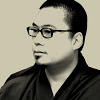




































































































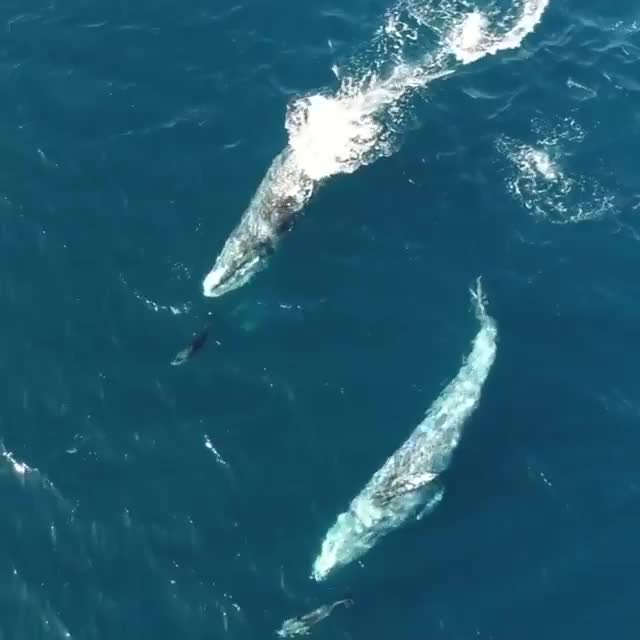

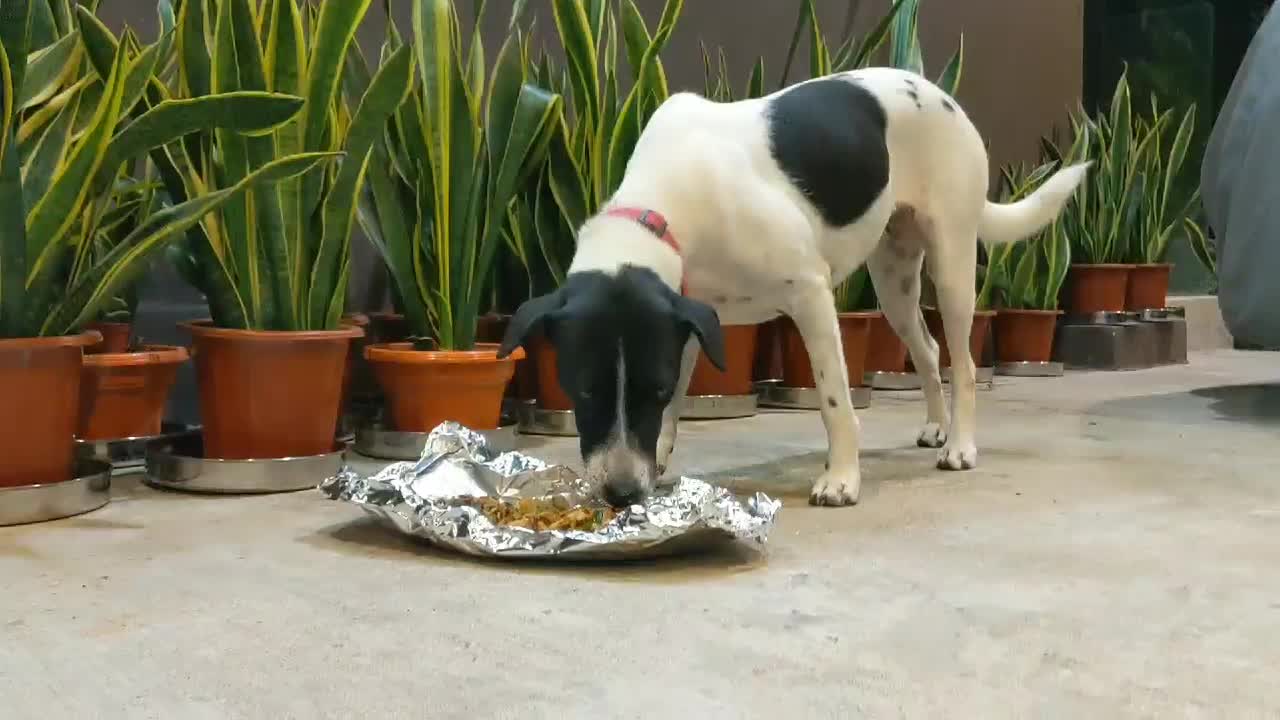
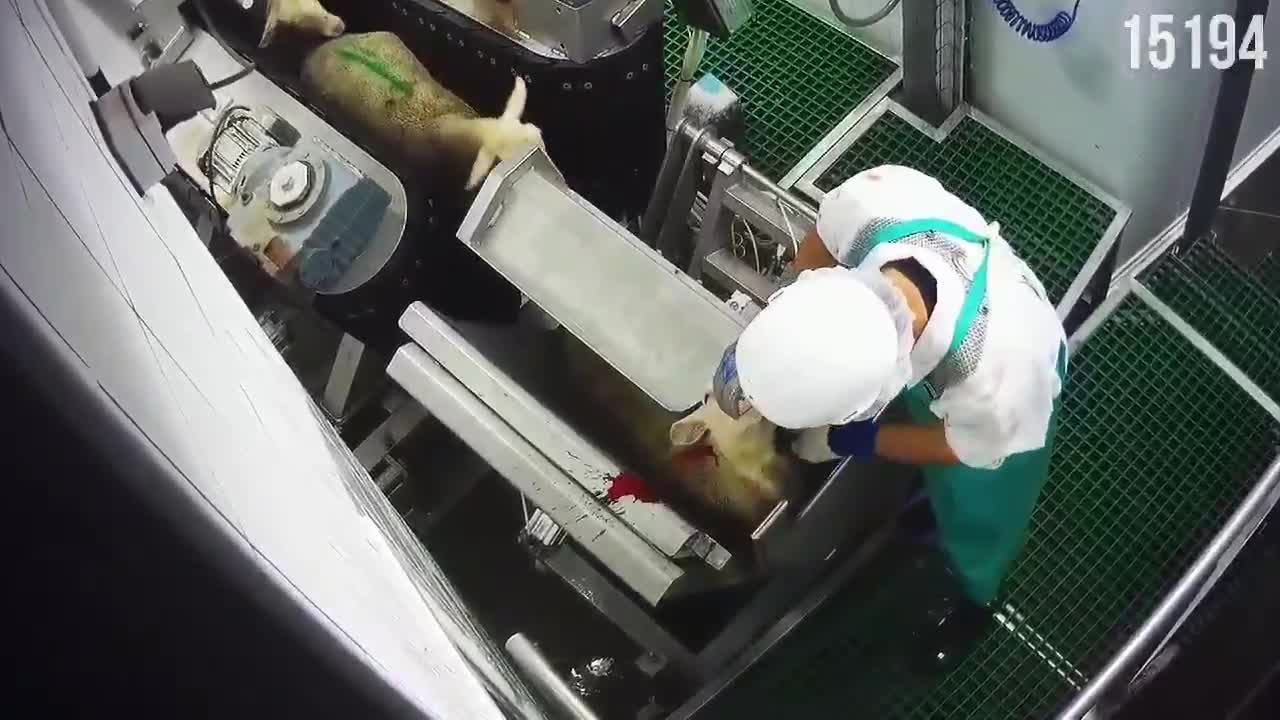

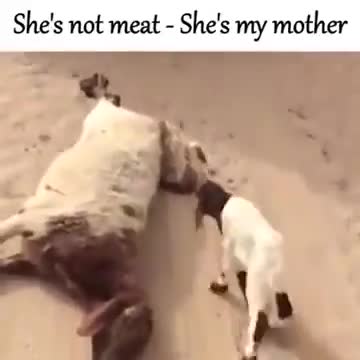
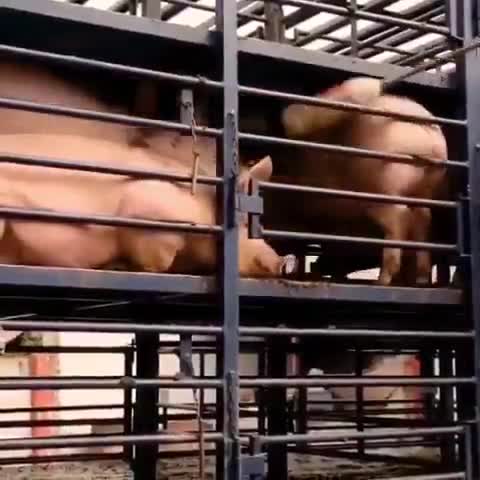


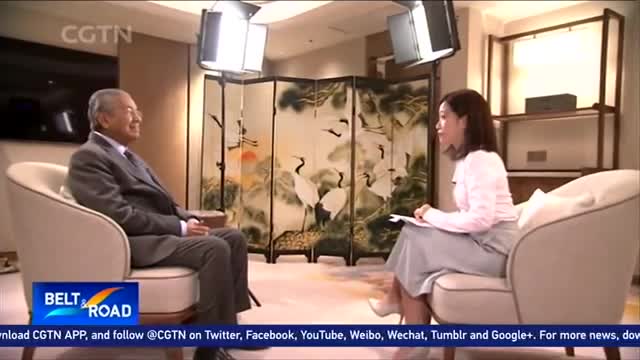
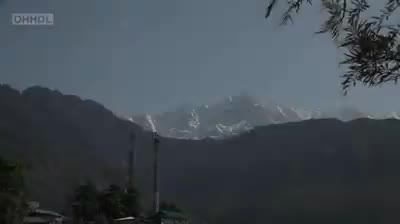
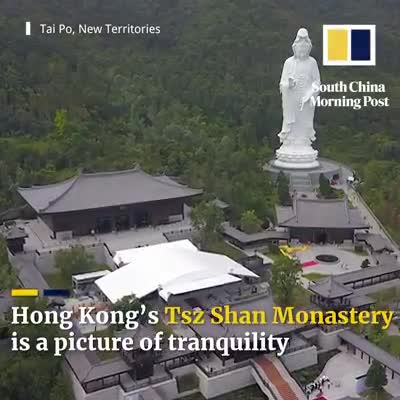

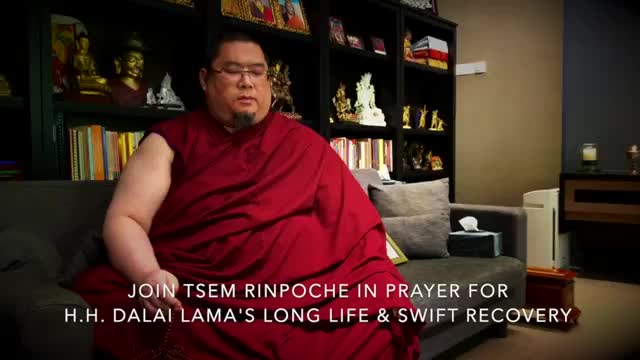
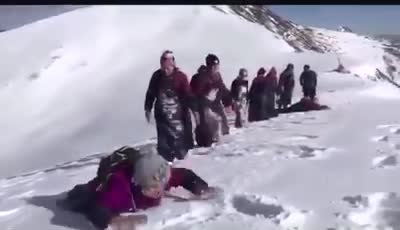
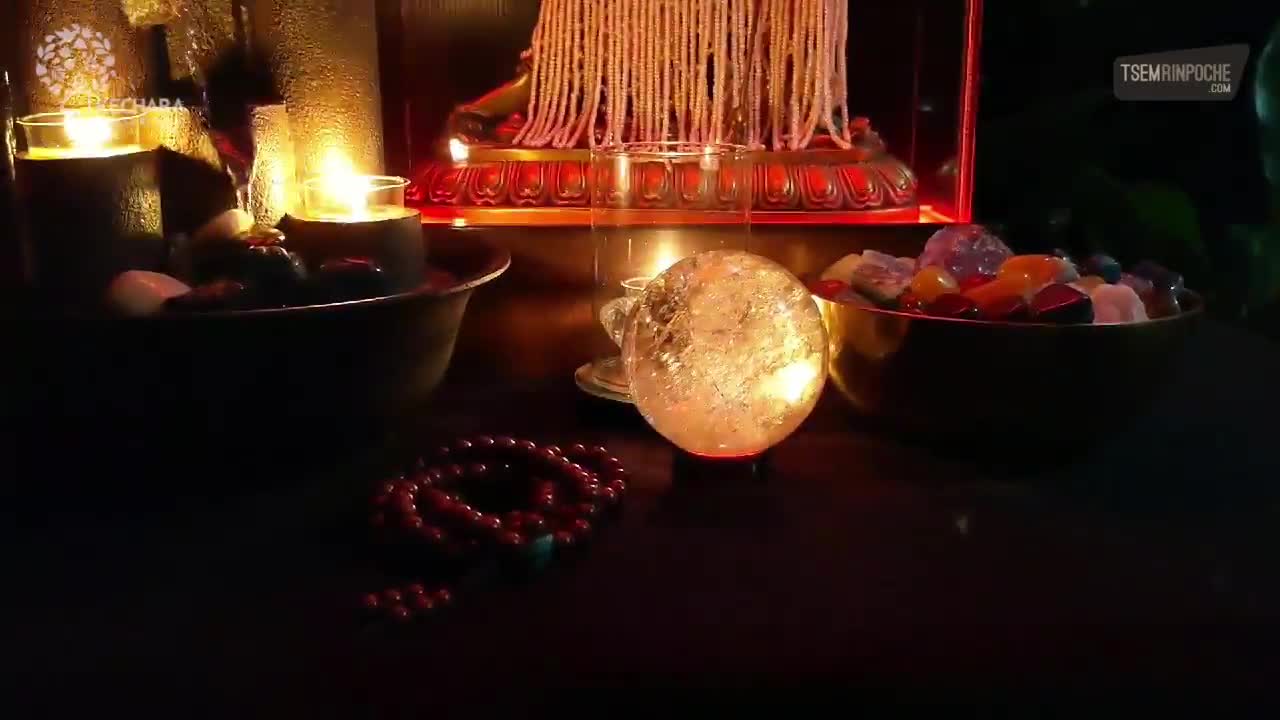

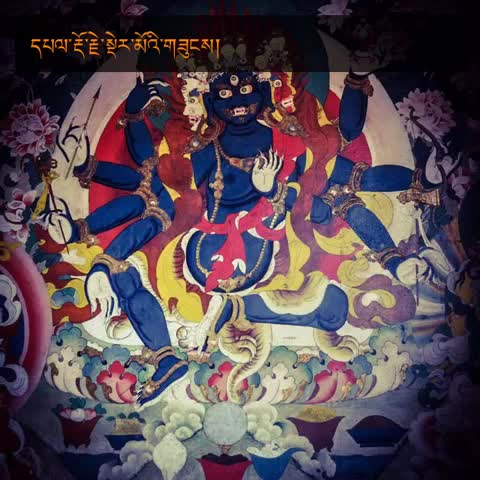
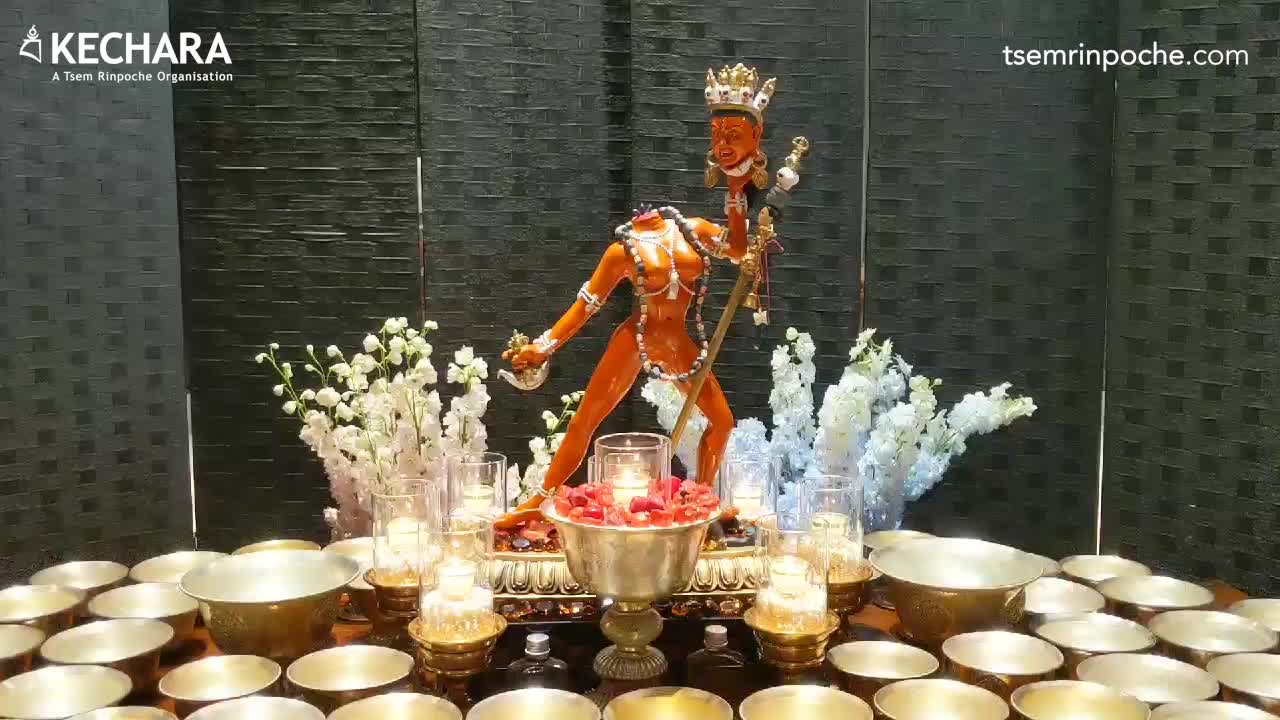





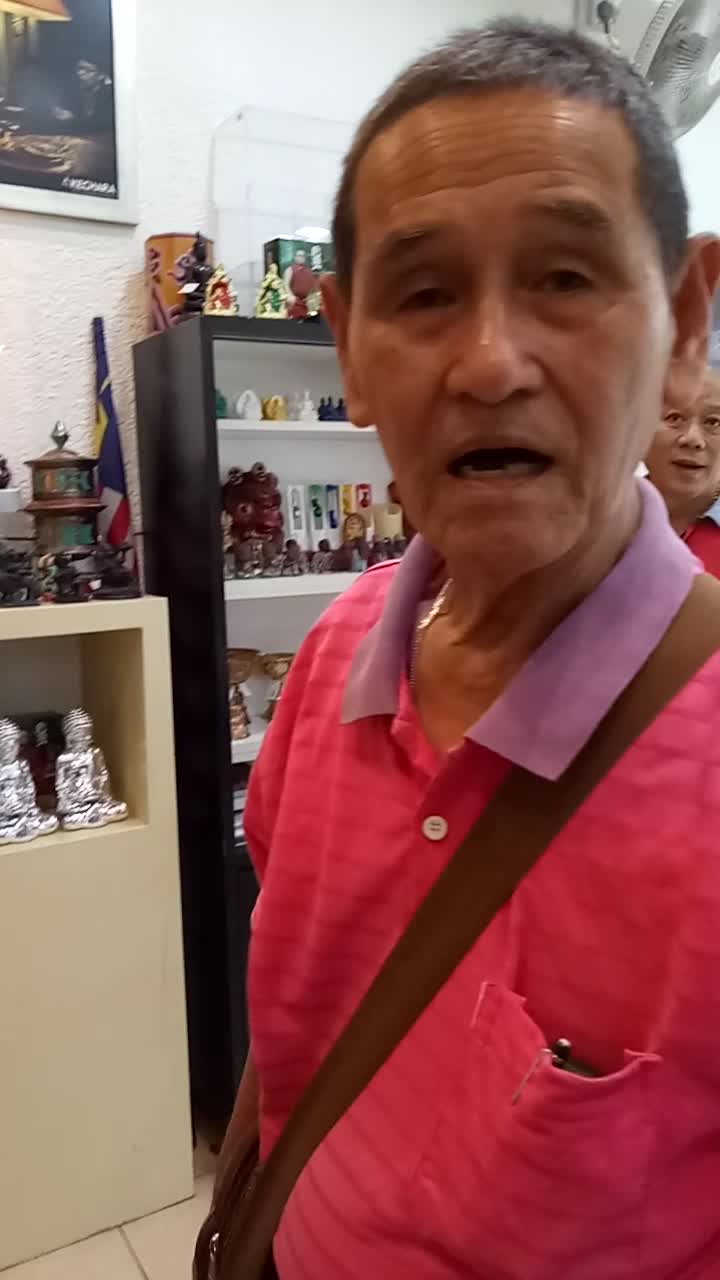







































































Fine way of telling, andd pleasant post to get data about my presentation subject,
which i am going to convey in school.
Thubten Gyatso was the 13th Dalai Lama of Tibet was recognized as the as the reincarnation of the 12th Dalai Lama. He is a man of strong character but of kind disposition and is strict observer of religious ceremonies. He pays great attention to the details of administration, who proved himself a skillful politician. He was responsible for countering the British expedition to Tibet and was involved with the anti-foreign Tibetan Rebellion. He survived the ordeals of both experiences of the British and Chinese invasion with his authority enormously enhanced. Sadly, before accomplishing his goal for Tibet’s modernization he passed away at the age of fifty-eight. Interesting read of a Great Lama who determined to bring about political and social reforms in Tibet.
Thank you Rinpoche for this sharing.
The Thirteenth Dalai Lama, Thupten Gyatso, was born into a peasant family in southern Tibet. Many auspicious signs accompanied his birth. He was recognized as the tulku of the 12th Dalai Lama. The 13th Dalai Lama devoted himself to religious studies and assumed political power until the age of 20. He was well known for his efforts to modernize Tibet at that time. The 13th Dalai Lama, Thubten Gyatso was a true temporal and spiritual leader who guided his people through a firestorm of challenges to the survival of Tibet. Interesting read.
Thank you Rinpoche for this sharing.
Nice short video of a new LED signage reminding us of who we can go to for blessings in case of need: https://www.youtube.com/watch?v=EBwrkaKUoH0
Listening to the chanting of sacred words, melodies, mantras, sutras and prayers has a very powerful healing effect on our outer and inner environments. It clears the chakras, spiritual toxins, the paths where our ‘chi’ travels within our bodies for health as well as for clearing the mind. It is soothing and relaxing but at the same time invigorates us with positive energy. The sacred sounds invite positive beings to inhabit our environment, expels negative beings and brings the sound of growth to the land, animals, water and plants. Sacred chants bless all living beings on our land as well as inanimate objects. Do download and play while in traffic to relax, when you are about to sleep, during meditation, during stress or just anytime. Great to play for animals and children. Share with friends the blessing of a full Dorje Shugden puja performed at Kechara Forest Retreat by our puja department for the benefit of others. Tsem Rinpoche
Listen here: https://www.youtube.com/watch?v=ZbzgskLKxT8&t=5821s